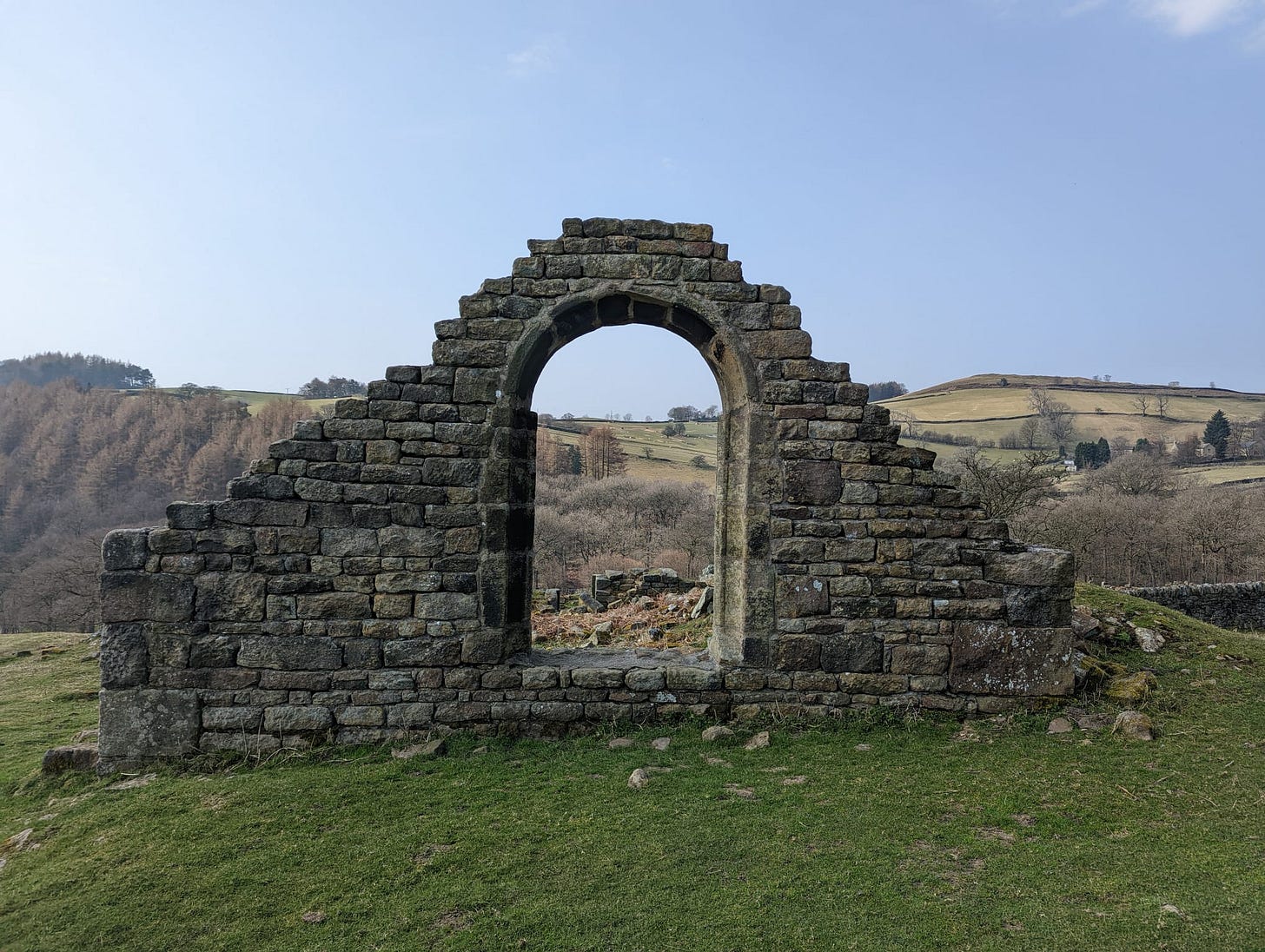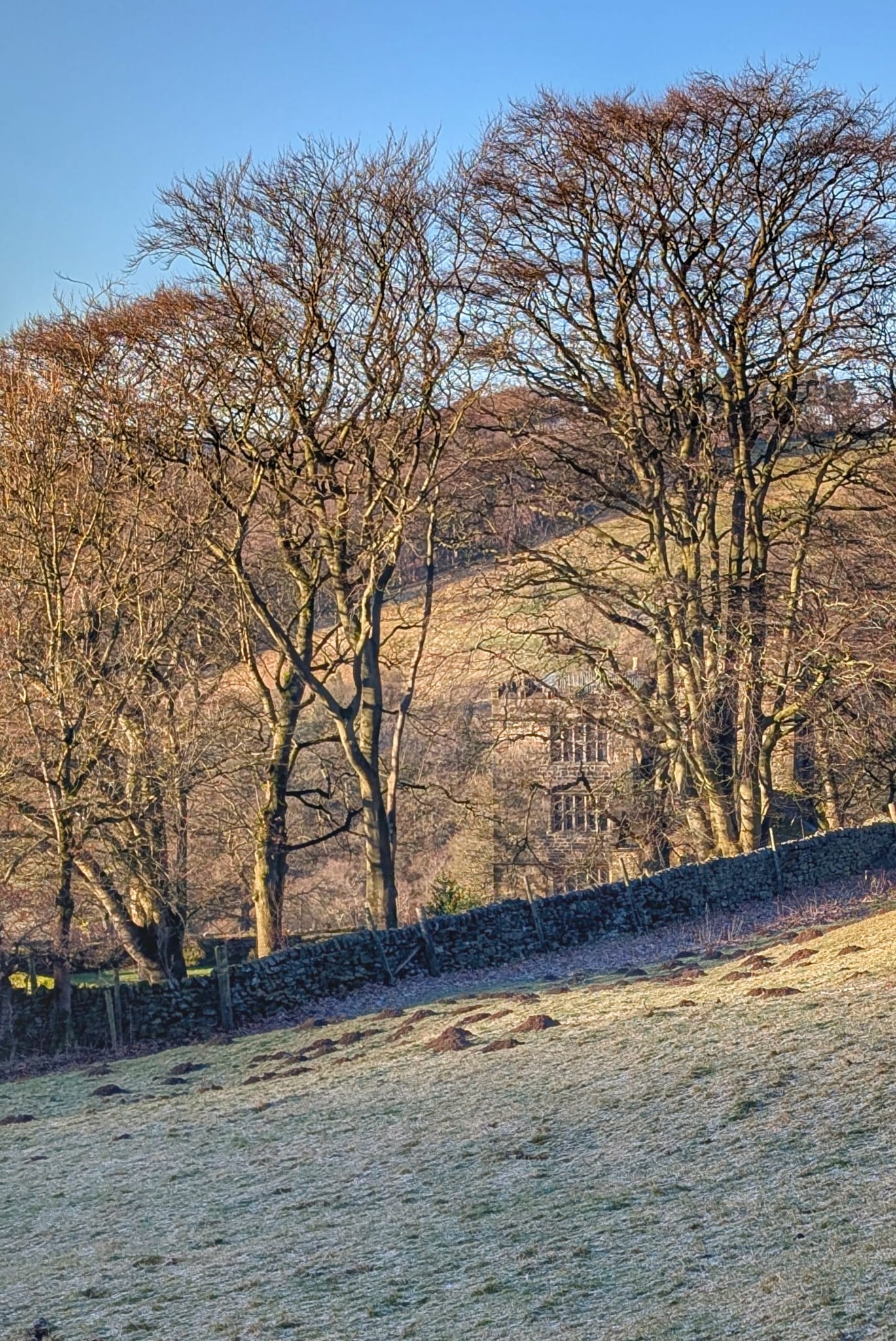Hidden Histories: Unlocking the UK's Inaccessible Heritage
Why access to the UK’s isolated archaeological sites is a right worth fighting for
Every step we take in the UK presses on history, but how often do we stop to wonder whose history it is — and who gets to access it?
When I hike, I often imagine the stories beneath my feet. 'Who created this millstone?' I'll wonder as I hike past. 'Perhaps a Viking burial sits tucked under the roots of this oak tree,' I think as I stop for lunch. Did a Neolithic woman once pause for a breather beside these rock carvings?
These musings remind me that the landscapes we cherish are layered with stories. Our ability to connect with them shouldn't be taken for granted. That connection between nature, community, and our past hovers around our cognisance at sites of archaeological interest in the outdoors. It's an opportunity to transcend our daily humdrum and have a tangible experience with history in its rawest form.
I'm thankful I live somewhere with a rich archaeological heritage, like the United Kingdom; it was a surprise when I discovered people couldn't enjoy this experience at all historic sites outdoors.
A recent survey by campaigners Right to Roam has highlighted a troubling reality. In collaboration with their friends Stone Club, Right to Roam has found that the general public is blocked off from over 5,000 archaeological sites because they have no existing legal rights of way to them. Other outdoor groups (such as the CPRE) say the number is much higher as the survey excluded sites 20 metres from a road or footpath. For some, the right to explore pockets of their local history is closed off.
Banned from my back garden?
Alarmed that the heritage sites I cherish in the Peak District might be off-limits, I began my investigation. After scanning the interactive map of inaccessible scheduled monuments1, one heritage site immediately caught my eye.
Nestled between verdant hills overlooking the postcard-perfect village of Hathersage and the imposing shadow of Stanage Edge, North Lees Chapel's windowless stone frame beckons passersby. The ruins urge you to pause and appreciate the sweeping views of the Peak District.
I wandered off the footpath, trespassing across a field to reach the chapel. Luckily the owners of the area had added signage to denote permissive access to the site. As Right to Roam explains2 trespassing is considered a civil offence, but you'll unlikely be taken to court. This monument sits in isolation, surrounded by a blanket of private fields.
The chapel isn’t just a pretty landmark, as I discovered in my searches to learn more about the chapel after my visit. Its story is tangled in centuries of history.
Derbyshire Council historical records3 suggest North Lees Chapel was built in 1685 as a Roman Catholic chapel, only to be destroyed a few years later during the Glorious Revolution. Other archival accounts claim the chapel predates the Reformation and fell into disrepair after 1590 when Richard Fenton, a persecuted Catholic and owner of the nearby North Lees Hall estate, retired.
From the chapel's vantage point, you can see North Lees Hall and its surrounding buildings. The tower house, shrouded in a patchwork of trees, peers out at you from small, stern windows like unblinking eyes. The scene is eerily haunting and captivating, a fitting backdrop for the Gothic tales I discovered had emerged from this area.
Gothic connections
It’s impossible to share the story of North Lees Hall without mentioning a particular family: the Eyres4.
Over the coming centuries, the Eyres gradually rose to prominence as overseers, looking after local land on behalf of remote gentry families. They also had a shrewd knack for marrying their sons to heiresses with estates.
The family enjoyed a heady mixture of wealth, power, and influence, which made them a prominent target.
Following Henry VIII's split with the Catholic Church, the Eyres fell hard from grace. As staunch Catholics, they were labelled recusants and stripped of much of their land and power. The Eyres wouldn't reclaim residence in North Lees Hall again until 1750.
By the early 1800s, Gothic fiction and landscapes gripped the Victorian imagination. In 1845, Charlotte Brontë visited North Lees Hall while staying with a school friend in Hathersage.

Bronte was struck by North Lees Hall's battlement-style architecture and moody atmosphere to such an extent it served as inspiration for Thornfield Hall in Jane Eyre:
“I stepped over the threshold. It was a fine autumn morning; the early sun shone serenely on embrowned groves and still green fields; advancing on to the lawn, I looked up and surveyed the front of the mansion. It was three storeys high, of proportions not vast, though considerable: a gentleman’s manor-house, not a nobleman’s seat: battlements round the top gave it a picturesque look.”
I’ve read Jane Eyre several times but it’s only now, having visited North Lees Chapel and wandered the surrounding hills endlessly, that I realise it's the pivotal setting in the book.
Inaccessible heritage in its broader context
As the saying goes, "No man is an island." The same applies to archaeological sites. There's a reason archaeologists record detailed records of the soil, artefacts, environmental context, surrounding landscape, and more when excavating a site. Viewing a site in isolation offers only a partial story; placing it in its broader context enriches our understanding.
The same applies to my exploration of North Lees Chapel. Seeing the ruins within their historical and geographical setting deepened my appreciation for their significance. What I had once dismissed as the scenic remnants of a chapel turned out to be a focal point in a tapestry of Gothic literature, Catholic recusancy, and local history that has impacted people worldwide.
While I was fortunate to find the chapel’s owners had installed permissive access, this is not the case across all 5,000 inaccessible monuments. Permissive access is not permanent and can be revoked at any point, such as a change in ownership. An example of this is the case of Alexander Darwall in Dartmoor National Park. After acquiring the 4,000-acre Blachford Estate, he took legal action to restrict wild camping and even picnicking. His goal? To replace the long-enjoyed public rights with exclusive uses such as pheasant shoots, deerstalking, and holiday rentals.
Blocking access to such sites diminishes our ability to connect with the past. These places are more than relics. They are threads that tie us to our ancestors, our communities, and the landscapes we inhabit. Interacting with local heritage shouldn’t be the preserve of a wealthy few. Preventing public access only exacerbates the challenges people face in engaging with their local heritage.
A call to action
What else might we uncover if we could freely explore these off-limit sites? What stories remain untold, locked away behind legal boundaries?
If we value our shared history, we must ensure it remains accessible to everyone. People shouldn’t have to trespass and risk civil offence to see their local history. Supporting campaigns like Right to Roam for greater access to heritage sites isn’t just about protecting history; it’s about preserving our connection to the places that shaped us.
What can you do?
If you want to learn more about inaccessible heritage near you, there are a few options:
Check for permissive access
The owners of some sites will provide special permission for people to access them.
Join or contact your local heritage societies.
These groups are a fountain of knowledge and can help support your search for learning more about the heritage sites near you. The Council for British Archaeology has a variety of local groups you can become a member.
Take photos and share your findings online.
Groups like Historic England invite user contributions, including photos and comments, to its digital records of historic sites. You can even report an issue with a site if it has been damaged recently.
Please share your explorations of any inaccessible monuments with me via the comments section below. I'd love to hear of any local stories you've learned or surprising histories you've uncovered that have given you a new perspective of your local area.
If you enjoyed today’s post, consider subscribing to AmorExplore. Each fortnight you will receive a free walking route, feature, or insight into the wild reaches of nature, archaeology, and adventure sports.
Spooner, Fiona. “Inaccessible Scheduled Monuments.” Github.io, 2025, spoonerf.github.io/inaccessible_monuments/. Accessed 21 Jan. 2025.
TAKE ACTION | RIGHT to ROAM.” NEW RIGHT to ROAM, 2020, www.righttoroam.org.uk/takeaction. Accessed 25 Jan. 2025.
MDR4210 - North Lees Chapel (Remains Of), North Lees, Outseats - Derbyshire Historic Environment Record.” Derbyshire.gov.uk, 2019, her.derbyshire.gov.uk/Monument/MDR4210. Accessed 21 Jan. 2025.
Peak District National Park. (2019). North Lees Hall: Peak District National Park. [online] Available at: https://www.peakdistrict.gov.uk/visiting/places-to-visit/stanage-and-north-lees/north-lees-hall [Accessed 15 Jan. 2025].










Wonderful article and call to action. This is worth fighting for.
Exactly! Or why any one person/family needs to hoard 100,000 acres. I tried to write a book review about it and how it tied to climbing access but it ended up being a stream of consciousness rant because I had too many thoughts haha. Hope you enjoy the book!